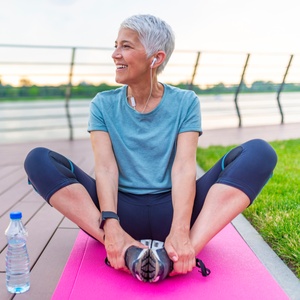Blog
Welcome to FaceForward
Get the scoop on all things beauty, wellness, and skincare.

For most of us, we’d rather not see the evidence of aging right on our faces. That’s why countless medical procedures have cropped up to reverse those inevitable signs of aging.
But there may be less costly and invasive ways to help skin retain a more youthful appearance.
Anti-aging facial exercises, sometimes called facial yoga or facial gymnastics, are an emerging way to fight the signs of aging and maintain a full, youthful face, according to some research. And, they can easily be used in conjunction with prescription anti-aging treatments for more significant results.
By developing the muscles in the face, you can give it a fuller, more vibrant appearance. That's the case according to recent research from Northwestern University.
While it was once thought that all movement of the face leads to wrinkles and works against anti-aging practices, it’s more recently been found that evidence of aging on the face is not only tied to the surface movements but also the quality of the deeper substructures, including the muscle and fat.
A study conducted by Northwestern University on the effectiveness of facial exercises found that a person’s perceived age dropped after following a consistent regimen of regular facial exercises for 20 weeks.
Participants in the study reported that they felt their skin looked younger afterward.
Blinded ratings showed significant improvement in upper and lower cheek fullness for participants in the study, and blinded raters estimated the age of participants dropped from an average of 50.8 years at baseline to 48.1 years at 20 weeks. Participants in the study were highly satisfied, noting significant improvement in 18 of 20 facial features.
The study was small and designed to be a pilot, but the results are encouraging for this new approach to fighting aging. And the rationale is there. Just like the rest of the muscles in your body, if the muscles in your face aren’t exercised properly, they won’t maintain firmness. By strengthening your facial muscles using intentional, proven practices, you may be giving your face a youthful boost.
For best results, it may make sense to follow the experts: the study above had participants do their facial exercises every day for 30 minutes. Though it might seem like a lot, the more consistently you do the exercises the more effective they’ll be. If every day is too much of a commitment, try every other day.
Facial exercises, like exercises for the rest of the body, are often specially designed to address one specific issue and muscle group. Here are 14 facial exercises divided up by area of the face so that you can craft the anti-aging facial exercises routine that makes the most sense for you and your face.
The forehead is an area of the face where many people experience their most noticeable lines and wrinkles. Practice these exercises to strengthen the frontalis muscle.
Sagging cheeks can be a concern for many people as they age. Use these exercises to improve muscle strength in the cheeks and potentially give your face a fuller appearance.
Crow’s feet are often some of the first lines to grace a face and the laugh lines that come with them can be especially pronounced. Minimize their appearance using these exercises specially designed for the orbicularis oculi muscles around and under the eyes.
The lines that develop around the mouth over time due to aging can be exacerbated due to facial expressions such as smiling and lifestyle choices such as smoking. Minimize the appearance of these through these exercises designed to strengthen the muscles around the mouth.
Many people find that the line of their chin grows softer as time goes on and the skin on their neck grows flacid. Use these exercises to strengthen the muscles that support the chin, jaw and neck areas.
With consistent use of these anti-aging facial exercises, you may be able to improve the muscles in your face and maintain or restore a more youthful and healthy appearance.
When combined with other anti-aging measures, such as the specially formulated anti-aging treatments designed by the dermatologists at Nava MD, you can combat aging from multiple angles.
Get custom prescription treatments delivered, if approved, with a licensed dermatologists’ help and Nava MD. It’s the simplest and most affordable dermatology visit you’ve ever had, all done online. Click here to get started.
This article is intended for informational purposes only and should not be considered medical advice.
Consult a healthcare professional or call a doctor in the case of a medical emergency